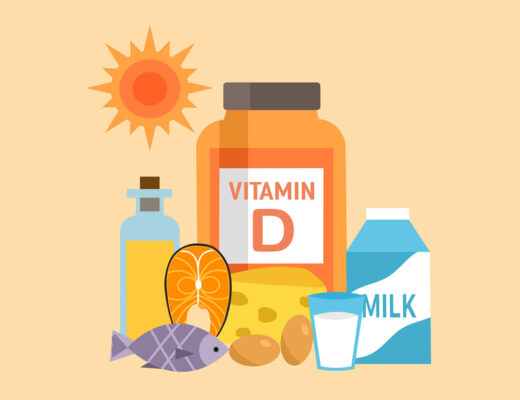• Symptoms of Irritant Dermatitis
Irritant dermatitis is a common form of skin irritation caused when the skin comes into contact with a harsh substance. It can occur due to long-term exposure or a single exposure to a chemical or other irritant. Symptoms of irritant dermatitis include:
- Redness, dryness, and itching of the skin
- Burning, stinging, and tenderness to the affected area
- Blistering, cracking, and flaking of the skin
- Unpleasant burning sensation in the affected area
The symptoms of irritant dermatitis can range from mild to severe, depending on the irritant and the amount of exposure the skin has had. It is important to seek medical attention if the symptoms are severe or persist for more than a few days.
• Symptoms of Contact Dermatitis
Contact dermatitis occurs when the skin comes into contact with a particular substance and reacts to it. This condition can be classified as either irritant or allergic contact dermatitis. Symptoms of contact dermatitis include:
- Redness and swelling of the skin
- Itching
- Burning sensation
- Dry and flaky skin
- Small raised bumps, blisters or hives
The symptoms of contact dermatitis usually appear within a few hours of contact with the irritant or allergen and can last for a few days or weeks. The affected area may be tender or painful, and blisters may develop if the contact dermatitis is caused by an allergen. If the cause of contact dermatitis is not known or treated properly, the condition may become chronic or persistent.
• Differences between Irritant and Contact Dermatitis
Irritant and contact dermatitis are different types of skin reactions that can affect the same areas of the body. But there are key differences between them, which can help you identify and manage the issue. Here’s a look at the differences between the two:
- Cause: Irritant dermatitis is most commonly caused by contact with irritating substances like chemicals, soaps and detergents, whereas contact dermatitis is caused by an allergy to certain substances.
- Appearance: Irritant dermatitis usually appears as a red, dry rash that can be itchy and scaly. Contact dermatitis typically appears as red, itchy bumps or blisters.
- Location: Irritant dermatitis tends to appear on areas that have been directly affected by the irritant, while contact dermatitis can appear anywhere on the body.
- Treatment: Treatment for irritant dermatitis is focused on reducing contact with the irritant and using topical creams to reduce discomfort, while contact dermatitis may require more targeted treatments like oral medications and immunotherapy.
• Causes of Irritant Dermatitis
Irritant vs Contact Dermatitis is a common skin condition characterized by an allergic reaction. Irritant dermatitis is a type of allergic reaction caused by direct contact with an irritant in the environment, such as a chemical or certain fabrics. It is usually caused by contact with water, detergents, cleaning products, or other chemical agents. Contact dermatitis, on the other hand, is an allergic reaction caused by exposure to an allergen in the environment. Causes of Irritant Dermatitis:
- Exposure to certain chemicals in the environment, such as detergents, cleaning products, solvents and perfumes.
- Contact with water such as swimming or showering.
- Wearing clothing that is too tight or irritating to the skin.
- Friction caused by activities such as running, playing sports or manual labor.
- Exposure to extreme temperatures.
Irritant dermatitis is usually more common than contact dermatitis, and it is usually easier to treat. However, both types of dermatitis can cause painful, itchy, red rashes and blisters, so it is important to seek medical attention to ensure that the right treatment is prescribed.
• Causes of Contact Dermatitis
Contact dermatitis is an inflammatory skin condition that can cause itching, redness, swelling, and burning sensations. It can be caused by contact with an irritant such as an allergen or an environmental agent, or it can be triggered by an allergens such as cosmetics, materials, and certain metals. The most common causes of contact dermatitis include direct contact with harsh chemicals, fragrance ingredients, irritants such as certain plant oils, certain cosmetics, and certain fabrics. Other causes may include exposure to toxins and radiation, and to certain medical products such as antibiotics, antihistamines and ointments. On rare occasions, contact dermatitis can be caused by an infection. In all cases, prolonged exposure to a causative agent can cause contact dermatitis to worsen.
• Diagnosis
Diagnosis of irritant and contact dermatitis usually involves a physical exam and review of a patient’s medical history. A doctor may ask questions such as when the rash started, how long it has been present, and which products the patient has been using on the skin. Skin samples are sometimes taken for biopsy, to ensure accuracy of diagnosis. Careful examination of the skin can help a doctor to determine if irritant or contact dermatitis is present. Irritant dermatitis will often show signs of inflammation such as redness, blisters and scaly patches, as well as a burning or stinging sensation. Contact dermatitis will instead show signs of itchiness and raised bumps. In some cases, further diagnosis may be required to determine affects of a particular allergen. Nevertheless, by properly identifying the cause and trigger, doctors are often able to provide effective treatment to help quickly relieve symptoms of the dermatitis.
• Treatment
When it comes to treating irritant or contact dermatitis, it is important to first identify the underlying cause and then work to reduce the symptoms and prevent further damage. First, any known irritants or allergens should be avoided, and it is important to keep skin clean and protected from further irritation. If the skin is also inflamed, over-the-counter anti-inflammatory creams, lotions, and ointments can be applied to reduce redness and swelling. For severe cases, a prescription-strength steroid cream may be recommended. In addition, it is important to stay hydrated, eat a healthy diet, and get enough rest to speed up the healing process. In some cases, a doctor may also suggest oral medications or allergy shots.
• Prevention
Preventing skin reactions can be challenging, since the source of irritation may not be readily apparent. However, there are a few important strategies to adopt: First, it is important to identify potential sources of irritation that have caused skin reactions in the past. If possible, avoid these items or situations. It is also a good idea to wear protective clothing such as gloves or hats when working with materials that may irritate the skin. Additionally, make sure to wear clothes made from fabric that breathes. Wearing clothing that does not allow the skin to breathe can trap in sweat and increase irritation. Lastly, use a mild, soap-free cleanser to wash your skin. Such a cleanser helps reduce the risk of irritating contaminants and chemicals. If you are experiencing a skin reaction, see a doctor for proper treatment.





No Comments